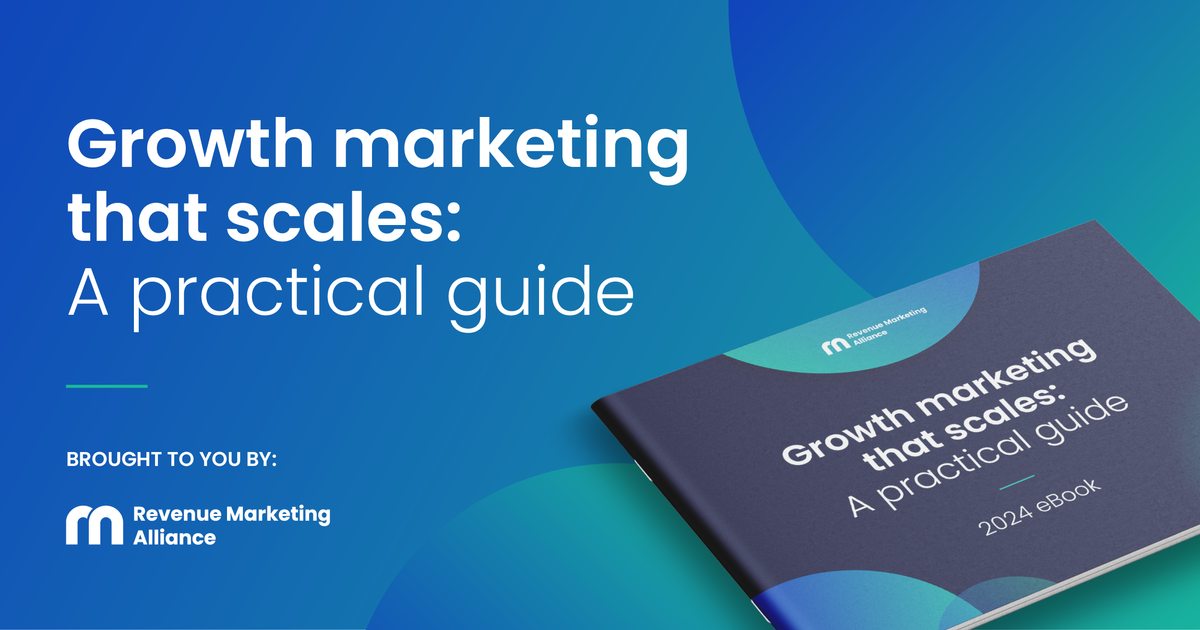Aligning your marketing team’s focus to company business goals is not just beneficial—it's essential. This alignment ensures that all departments are working towards the same goalposts, fostering a unified approach that drives success.
Here’s a comprehensive look at why this alignment is crucial and how data plays a pivotal role in this process.
A focused growth mindset
Having a focused growth mindset that aligns with business targets means every department, from marketing to sales to customer service, is moving in the same direction. This unity ensures that efforts are not duplicated or wasted but are instead strategically directed towards common objectives. When everyone is on the same page, the synergy created can lead to remarkable outcomes.
The power of data
Data is the cornerstone of understanding your current state, forecasting future trends, and identifying gaps in your targets. It provides a clear picture of where you are and what you need to do to reach your business goals.

By leveraging data, you can:
- Assess current performance: Understand where your efforts are yielding results and where there is room for improvement.
- Forecast future trends: Predict future performance based on historical data and current market conditions.
- Pipeline coverage: Assess your current open pipeline against forecast future trends to ensure you have enough pipeline to meet your product targets.
- Identify gaps: Pinpoint areas where targets are not being met and strategize on how to bridge these gaps. Work cross functionally with sales, product, marketing and SDR (sales development representative) to help drive to close the gaps.
Strategising marketing activities with data
Using data to strategize your marketing activities and resources ensures that your efforts are efficient and effective. Data-driven strategies enable you to:
- Optimise campaigns: Continuously improve marketing campaigns based on performance data. This enables you to have the ability to pivot during, rather than just look retrospectively about what you could have done.
- Allocate resources wisely: Ensure that your budget and resources are invested in activities that drive the most significant returns. By measuring from the business targets down, you can work in areas that need the most attention now and plan ahead for any forecasted gaps.
- Target your audience precisely: Understand your audience better and tailor your messaging and tactics to meet their needs. Talking to your audience at the right stage of the buying cycle is king!

The 80/20 rule
The Pareto Principle, or the 80/20 rule, highlights that 80% of results come from 20% of activities. Identifying and focusing on this critical 20% can significantly enhance efficiency and impact. This principle helps in prioritising tasks that offer the most substantial benefits, ensuring that resources are not wasted on less productive activities.
This also enables your teams to work strategically towards the business goals, avoiding the reactive requests that come through from various departments as they are backed by the data to support them in their work output.
Integrating ‘science’ into your GTM strategy
Adding ‘science’ to your go-to-market (GTM) strategy can transform your marketing efforts. ‘Data science’ provides deeper insights into customer behaviour, market trends, channel performance by product, and the effectiveness of various strategies.
By leveraging advanced analytics, businesses can:
- Predict customer needs: Anticipate customer behaviour and needs, allowing for proactive marketing strategies.
- Enhance personalisation: Deliver highly personalised experiences that resonate with individual customers. The right message, at the right time.
- Optimise marketing spend: Ensure that marketing dollars are spent where they will have the most significant impact.
Scalable and sustainable growth
Focusing on scalable and sustainable growth, rather than growth at all costs, ensures long-term success. Sustainable growth strategies involve:
- Balanced resource allocation: Ensuring that growth efforts do not overextend the company's capabilities or resources.
- Long-term planning: Developing strategies that support continuous growth and can be maintained over time.
- Ethical considerations: Building growth strategies that are ethical and responsible, fostering trust and loyalty among customers.
Transparency and team empowerment
Harnessing your team with transparent information drives them to deliver results where the business needs it most as they are able make informed decisions. Transparency ensures that everyone is informed about the company’s goals, progress, and challenges. This approach:
- Boosts motivation: When teams understand how their efforts contribute to the bigger picture, they are more motivated and engaged.
- Enhances collaboration: Transparent communication fosters better collaboration across departments.
- Eliminates wasted efforts: Ensures that time and resources are not spent on tasks that do not move the needle.
Conclusion
Aligning your marketing team’s focus with company business goals is integral to achieving success. A focused growth mindset, driven by data, allows for precise strategizing and resource allocation.
Integrating ‘science’ into your GTM strategy ensures scalable and sustainable growth, while transparency empowers your team to deliver meaningful results. By working towards common goals, businesses can achieve remarkable outcomes and drive long-term success.
Want more on growth? Our practical guide about growth marketing that scales gives you a clear understanding of the frameworks and strategies you need for exponential revenue growth.
You also get a ton of information on topics like ROI maximization, nurturing loyalty, and using data to improve and optimize.




 Follow us on LinkedIn
Follow us on LinkedIn



